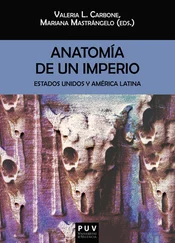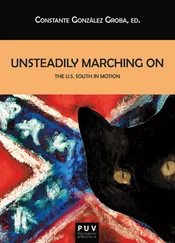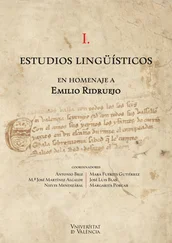Part I of the book interrogates obscured cultural and literary relationships between the American South and countries in the Caribbean basin. Once scholars adopted a comparative, transnational geographic frame to Southern studies, 16 they began seeking historical and imaginative connections with the Caribbean and/or South America. Jon Smith identifies such commonalities, which become an inspiration for many circum-Caribbean writers:
the history of colonial plantations, race slavery, race mixing, vibrant African cultural survival, disappeared bodies, a predilection for the baroque …, poverty, state-sponsored right-wing terrorism, insular communities, creole nativism, and what Woodward famously called “the experience of military defeat, occupation, and reconstruction.” (“Hot Bodies” 104-105)
A transnational, hemispheric perspective exposes the artificiality and arbitrariness of national barriers in a region where creolization, immigration, and a slave economy created a common collective experience.
Similar experiences of the collective traumatic experiences of the subaltern, plantation economies based on capitalist abuse of human chattel, and creolization create a Pan-American communal experience and the collective memory of a larger region. Literatures of the Caribbean, Latin America, and the American South express distrust of colonialism and a feeling of dispossession. Geo-cultural affinities are reflected in literary modes adopted by authors from across the Caribbean basin: literary modes of the grotesque, realism and magical realism, gothic, and counter-pastoral fiction in the respective national literatures. Authors reveal the transnational connections and unity of shared history and expose “subterranean” links between the American South and the Caribbean islands, redrawing the southernmost borders of the American South in the process. Cross-cultural readings of the South as a hemispheric region in the fictions of Lucy Holcombe, Elizabeth Livermore, Ana Lydia Vega, and Erna Brodber gathered in this volume tell the story of circum-Caribbean and inter-American cultural traffic and intersections.
This section begins with Deniz Bozkurt-Pekar’s article “Imagining the South Through the Caribbean: Spatial Narratives of Liberty in the Novels of Holcombe and Livermore,” which brings a new appreciation for the presence and significance of antebellum conceptualizations of liberty in the context of the “peculiar institution” and plantation economies of both the South and the Caribbean. Bozkurt-Pekar analyzes two novels – Elizabeth D. Livermore’s Zoë; or the Quadroon’s Triumph and Lucy Holcombe’s The Free Flag of Cuba – which respectively endorse Yankee transcendentalist abolitionism and Southern secessionism along with pro-slavery arguments. With the coexistence of divergent ideologies, the Union seems to be at a crossroads and these two opposing antebellum visions of the South (ideal transcendentalist republicanism versus pro-slavery southern filibusterism) serve as possible futures of the pre-war nation.
Strong ties to the Caribbean and the transnational connection are even more visible in Paula Barba Guerrero’s contribution, “Migrant Bodies and the Transnational South: Dissecting Colonial Presence in Ana Lydia Vega’s ‘Encancaranublado.’” Barba Guerrero interrogates the old southern plantation dynamics in the context of the Global South. Situating her analysis within the discourse of identity, migration, cultural memory and theories of space, Barba Guerrero is able to evocatively interrogate the porous and invisible border which prevents the migrant’s entry into the postbellum South. Her analysis of Vega’s tale reveals that southern hospitality, one of the core features of the region which in theory should regenerate and heal the migrant, is denied to the immigrants from the rimlands of the Caribbean.
Migration, dislocation of cultural identity and the concept of belonging are also taken up by Sofia Gkertzou in her article “Un-grounding Identity, Re-thinking Connections in Erna Brodber’s Louisiana .” Gkertzou problematizes the construction of black identities as depicted in Brodber’s novel Louisiana . Since no single, homogenous black collective identity exists (as cultural reductionism would have it), the novel plays with various narratives styles, voices, genres, spatial and temporal transferences, in order to express cultural and historical connections between the Caribbean and the U.S. South. Louisiana becomes a geographic and cultural double where the South is dislocated, “collaborative interdependence” between the U.S. and the Caribbean is enacted, and, following Glissant’s rhizomatic poetics, community of color is re-thought of as a circuit, since “each and every identity is extended through a relationship with the Other” (Glissant 11).
As with the contributions in Part I, the following articles in Part II do not cover all possible areas of Southern sense of place, but they present a broad view of “Southern place [that] is becoming a much more fluid concept” (Monteith and Jones, “Introduction” 3). Articles gathered in this section expand the meaning of the traditional “sense of place,” which was often associated with regionalism. In so doing they answer Barbara Ladd’s suggestion to “reconceptualize place as a site of cultural dynamism” (“Dismantling the Monolith” 32). Even though as a concept a “region is of indeterminate scale, its boundaries negotiable, overlapping, reiterative, and perspectival” (Nyerges and Adams 4) some (im)material social and cultural aspects underline its formation. A sense of place is one such aspect that continues to define the South as a region, and as Scott Romine observes “[o]f the several stock answers to the perennial question ‘What is southern literature?’, the importance of ‘place’ (or the presence of ‘sense of place’) surely ranks near the top of the list” (“Where is Southern Literature” 5). Despite being contested in times of a shifting sense of the South as a region, 17 a sense of place is still captured by and evoked in Southern literature: 18
Memory and community have both been problematized in recent work. The famous southern sense of place disappeared from the conversation for a while. Many southernists, like others in the United States academy, prefer “space,” perhaps for its familiar liberatory connotations, to “place,” which carries with it suggestions (questionable) of stasis and subjection. But place, formerly evoked in lyrical appeals, is now being theorized with respect to discourses of space, and a new sense of place is emerging in postcolonial, environmentalist, and feminist paradigms and practices. (Ladd, “Literary Studies” 1636)
Regardless of whether it is a positive or negative point of reference, in these times when Southerness is being redefined, “place needs to be constructed not as a stable site of tradition and history within a progressive nation, but as something more provisional, more fleeting, more subversive, and likewise more creative – a locus for economic, political, discursive, and more broadly cultural transactions, a site of memory and meaning both for the past and the future” (Ladd, “Dismantling the Monolith” 39-40).
This section begins with Julia Sattler’s analysis of the role of stage production and the choice of the lead actress in “Hot Hot Heat: The U.S. South in Benedict Andrews’s Production of A Streetcar Named Desire. ” Performance criticism furnishes an entry point for discussions of how a contemporary stage design and the choice of the lead actress (Gillian Anderson) re-imagine the South for non-Southern audience of London’s Young Vic (2014) and St. Ann’s Warehouse in New York (2016). Sattler analyzes how the Southernness is mediated through minimalistic, functional stage design, and interchanging “realism” and “magic” which result from the collision of the gallant Old South and industrial New South. She also pays critical attention to the implications of the rotating stage, which underscore “a contemporary imagination of a place that cannot be fixed, that is forever twisting, turning, fleeting” (Sattler).
Читать дальше












